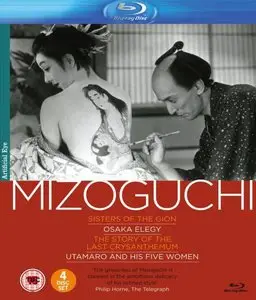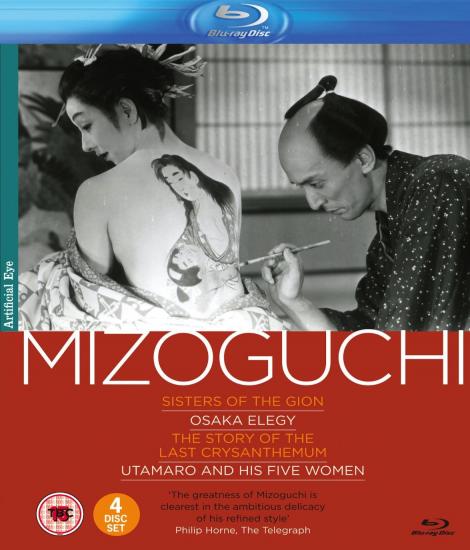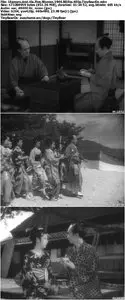Utamaro o meguru gonin no onna – Utamaro And His Five Women (1946)
BRRip 480p - TinyBearDs | MKV | 640 x 480 | x264 600kbps 23.976fps | HE-AACv2 64kbps 2CH
Language: Japanese | Subtitle: English Included | 94min | 451.36MB | 3% Recovery
Genre: Drama | IMDb Rating: 7.2/10 (399 users)
BRRip 480p - TinyBearDs | MKV | 640 x 480 | x264 600kbps 23.976fps | HE-AACv2 64kbps 2CH
Language: Japanese | Subtitle: English Included | 94min | 451.36MB | 3% Recovery
Genre: Drama | IMDb Rating: 7.2/10 (399 users)
Director: Kenji Mizoguchi
Utamaro, a great artist, lives to create portraits of beautiful women, and the brothels of Tokyo provide his models. A world of passion swirls around him, as the women in his life vie for lovers. And, occasionally, his art gets him into trouble.
An IMDb Review:Screenshots:
This is yet another fine work from Mizoguchi which I’d read about but had never gotten the opportunity to watch until now; distressingly, I had trouble with the disc once again (severe pixellation towards the very end) and, as was the case with THE LIFE OF OHARU (1952), I was forced to copy the film anew – luckily, with similar success (I’m keeping my fingers crossed for the remaining four Japanese titles I’ve got lined up for the rest of the week!).
To begin with, the title is accurate in that the protagonist, a Japanese painter of the 17th century, isn’t himself involved with the various female figures who inspire his work. Rather, it’s his friends/colleagues and, in particular, two of them who are torn between a couple of women each – in one case, even ending in tragedy! With this in mind, the film is generally lighter than most of the director’s work that I’ve watched so far – but that denouement is all the more effective because it’s unexpected (though followed by an uplifting coda in which the painter resumes his work after serving a 50-day sentence of house arrest for daring to sketch the current Shogun!).
Unlike, say, Akira Kurosawa, few actors used by Mizoguchi are recognizable names to Western audiences – however, the acting in his films is certainly no less compelling: that said, given Mizoguchi’s resume', it’s not surprising that he’s seemingly less interested in the painter himself than in his subjects (and especially Kinuyo Tanaka, the director’s frequent muse, who turns in a beautifully nuanced performance as the volatile geisha driven by love to extremes). This may be a film about an obsessive artist – whom Mizoguchi is said to have imbued with characteristics inherent in himself – and, yet, its intention isn’t to probe into his character or motivations but rather illustrate the time and milieu in which he operated…or, perhaps, to showcase Utamaro’s own “pretentious” dictum that the etchings he made (apparently with little effort!) were more “alive” than those of any of his contemporaries.
As would OHARU, the film follows an episodic structure: we begin by his being challenged to a swordfight over the above comment by an exponent of a rival art school, but countering his impulsive outrage by settling over a duel with the brush (which leaves the latter not merely an admirer of Utamaro’s individualistic style but a willing student and constant companion!). Other major sequences include the one where Utamaro paints directly on the ‘perfect skin’ of a courtesan (which had previously overwhelmed an eminent tattooist!) and the one which sees the painter (who has been turning below-par work due to a lack of inspiration) being presented with the opportunity of clandestinely sketching a plethora of concubines who regularly assemble at the river and, watched over by their lord, dive en masse to catch fish! Reportedly, Mizoguchi had trouble making this film at a time when period pieces were forbidden by the Occupation forces in Japan because of their glorification of feudal values; besides, the film’s budget apparently wasn’t big enough to afford a crane (which would have enabled the director’s traditional long and sweeping tracking shots) – however, he more than compensated with a flawlessly exquisite sense of composition throughout.





